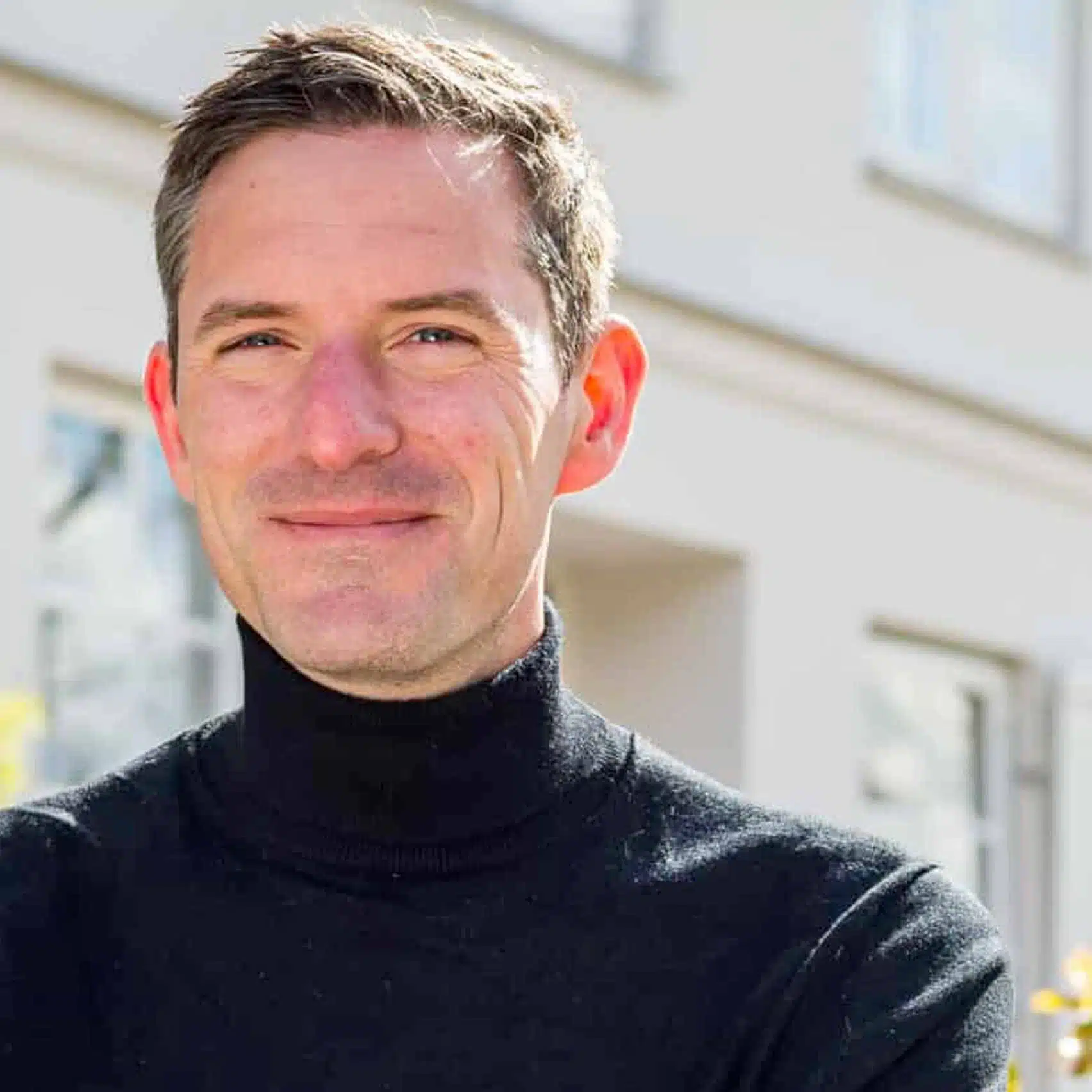7 suggestions on bike tours in the Lübeck area
“I want to ride my bicycle; I want to ride it where I like” is what Freddy Mercury sang in the Queen song “Bicycle Race” from 1978. Today, this message is more relevant than ever. Just recently, the campaign “Stadtradeln” ended for Lübeck. During the 3-week campaign period, Lübeck achieved a total of 742,165 km. A new record with which we set an example in terms of reducing our ecological footprint. Did you join the campaign as well?
Personally, I’m with Freddy on this one. My bike is my favorite means of transport. I use it to get to work and for most of my weekend trips. Lübeck is an excellent cycling city. Everything is easily and quickly accessible. No need to waste a thought on parking or gas prices. I keep in shape, get my head clear and I also get to see a lot of beautiful things on the way. My trip to work along the river Wakenitz is more picturesque than any other before.
There is also a lot to experience outside the city, as Lübeck’s surroundings offer beautiful and varied landscapes, idyllic bathing lakes and cosy cafés. In this article I would like to introduce you to 7 of my favorite tours.
7 towers – 7 tips
Bismarckturm and Riesebusch
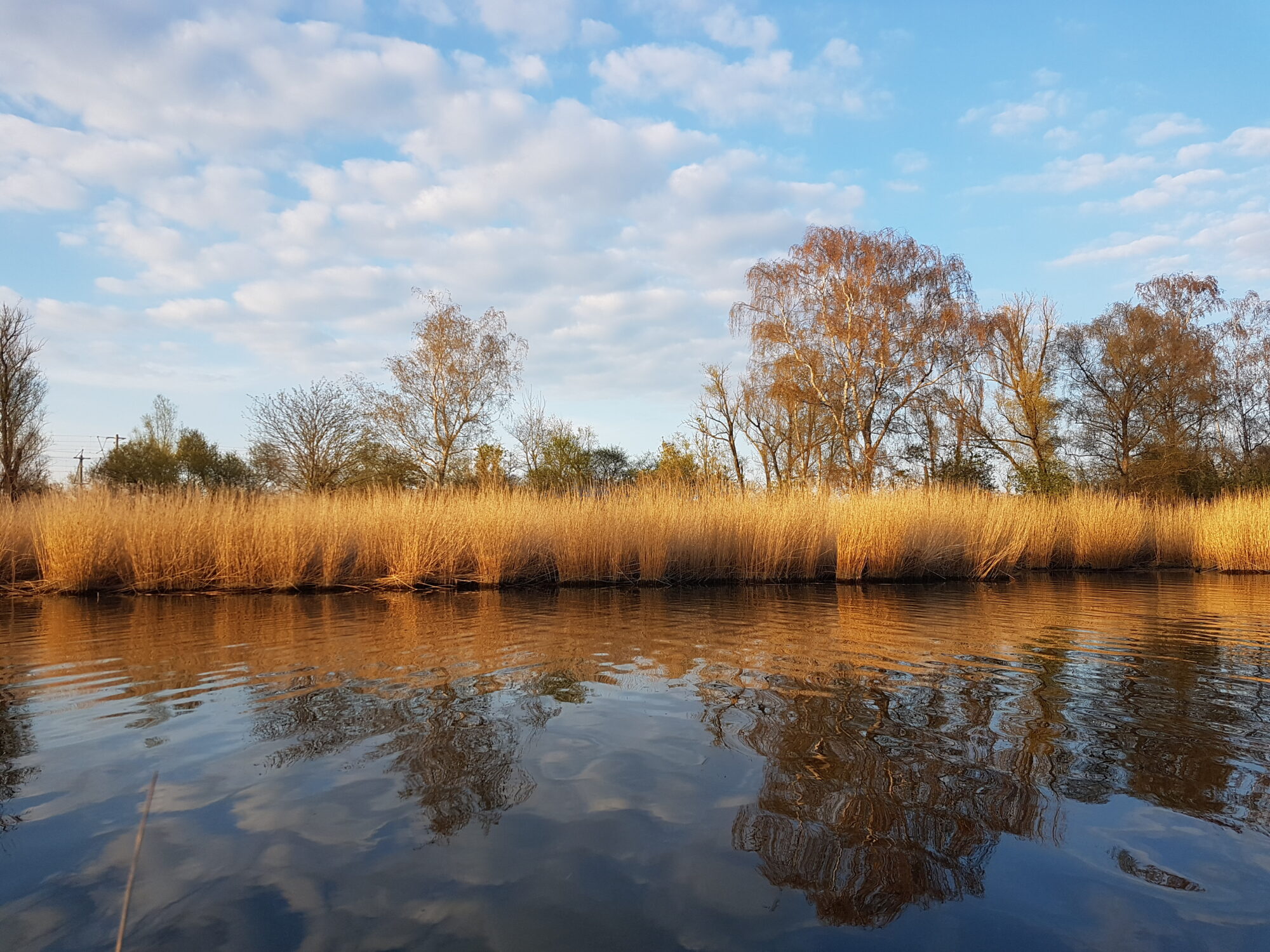
Total length: approx 28 km
This route is only 28 km long, but it has some challenging passages and therefore is quite suitable as a day program. Along the way, you will pass the reed-lined banks of the river Trave, the wooded hills Riesebusch and enjoy the fantastic view from the highest hill all around Lübeck.
Did you know that on the way to Bad Schwartau you pass one of Lübeck’s oldest industrial areas? In any case, it was news to me that the Tremser Teich was created as a fish and mill pond as early as the 14th century. Lübeck’s first paper mill ran on its water power.
The history of our town begins at the confluence of the rivers Schwartau and Trave. On the small peninsula, called “Old Lübeck”, you will find the remains of a Slavic fortress from the 9th century. Its name “Liubice” (for “The Lovely”) still does honour to the city of Lübeck.
From the small view tower Bismarckturm on Pariner Berg, your view sweeps over pastures and curbs, across the Bay of Lübeck to the 7 towers of the old town. The Bismarckturm dates back to 1902, when similar structures were erected all over the country in honor of the famous Reich Chancellor . Even the small restaurant “Pariner Berg” seems to stem from a bygone era. After all the miles you’ve covered so far, you deserve a piece of cake with a view of Lübeck. The way back leads through the Riesebusch. Here the small river Schwartau meanders between densely wooded hills. A picturesque sight, I think. Especially in the spring during the anemone bloom. Among athletes, the “Trimm-Dich” trail is a popular challenge. Amateur archaeologists may be interested in burial mounds from the Bronze Age and the remains of a 13th century castle.
Schellbruch and Gothmund
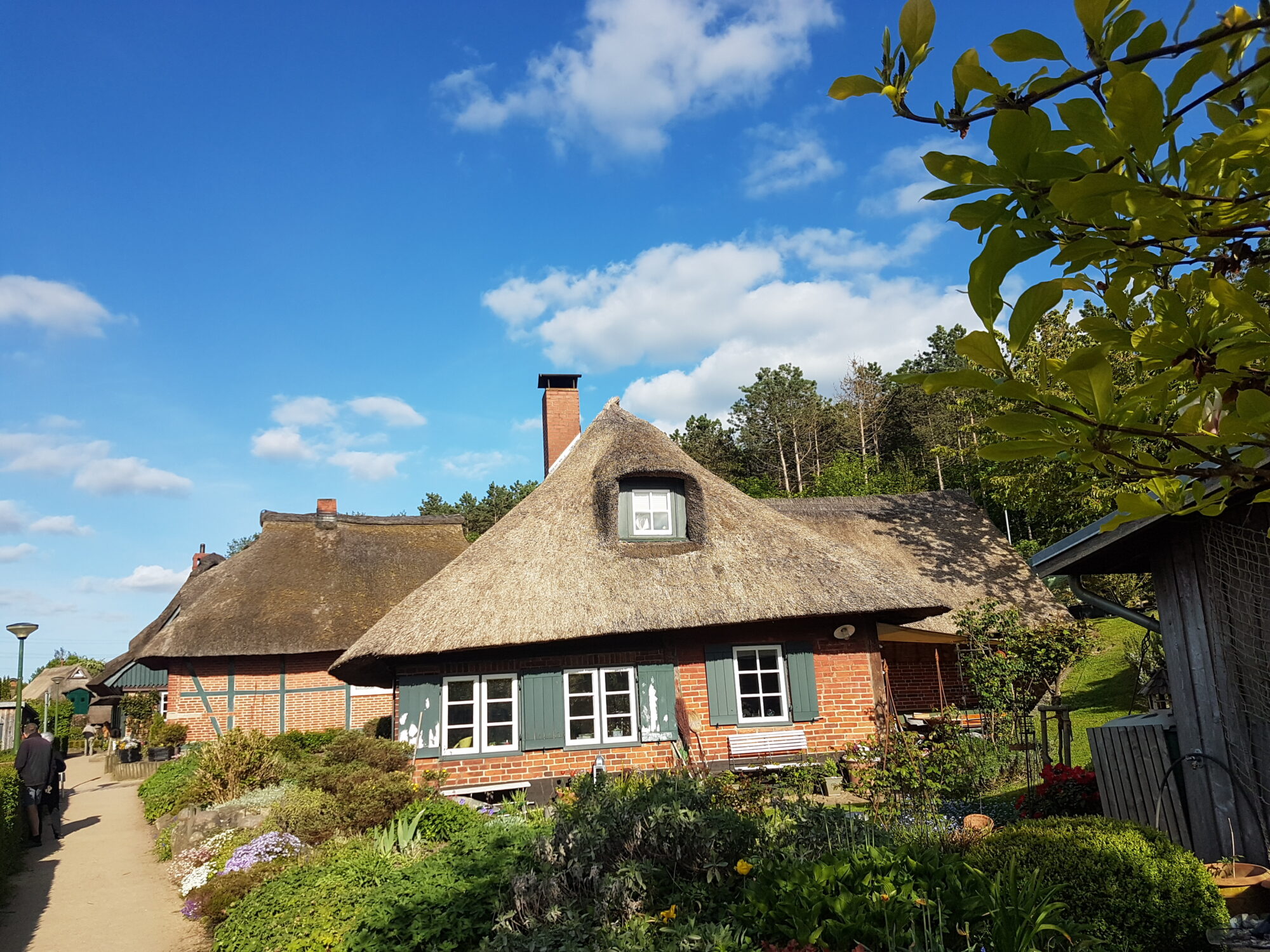
Total length: approx 18 km
My favorite trail north of the old town leads through the nature preserve Schellbruch to Gothmund and back through the forest Lauerholz. On 18 route kilometers you will experience a lot of varied nature to recharge your batteries. A highlight is the picturesque fishing village of Gothmund.
Beyond Lübecks “Castle Gate” you pass the Café Steinhusen at Burgfeld 3 – an institution among locals. You should not cycle past here without a packed picnic basket. The next stop is the Schellbruch nature preserve. The extensive lagoons along the Trave are a birdwatcher’s paradise with wide reed belts, wet meadows and deciduous forests. So close to the city and yet so far away, I have the feeling that I can breathe more deeply here.
The picturesque historic fishing village of Gothmund enchants with thatched houses and lovingly tended small front gardens. Old fishing boats are still moored on the banks of the river Trave and look like relics from another time. As early as 1502, Gothmund was mentioned for the first time in a protocol of the Lübeck council. For the way back, I recommend the Wesloer Weg through the wonderfully green, shady deciduous forest of the Lauerholz.
Wesloer Forest and Palinger Heath
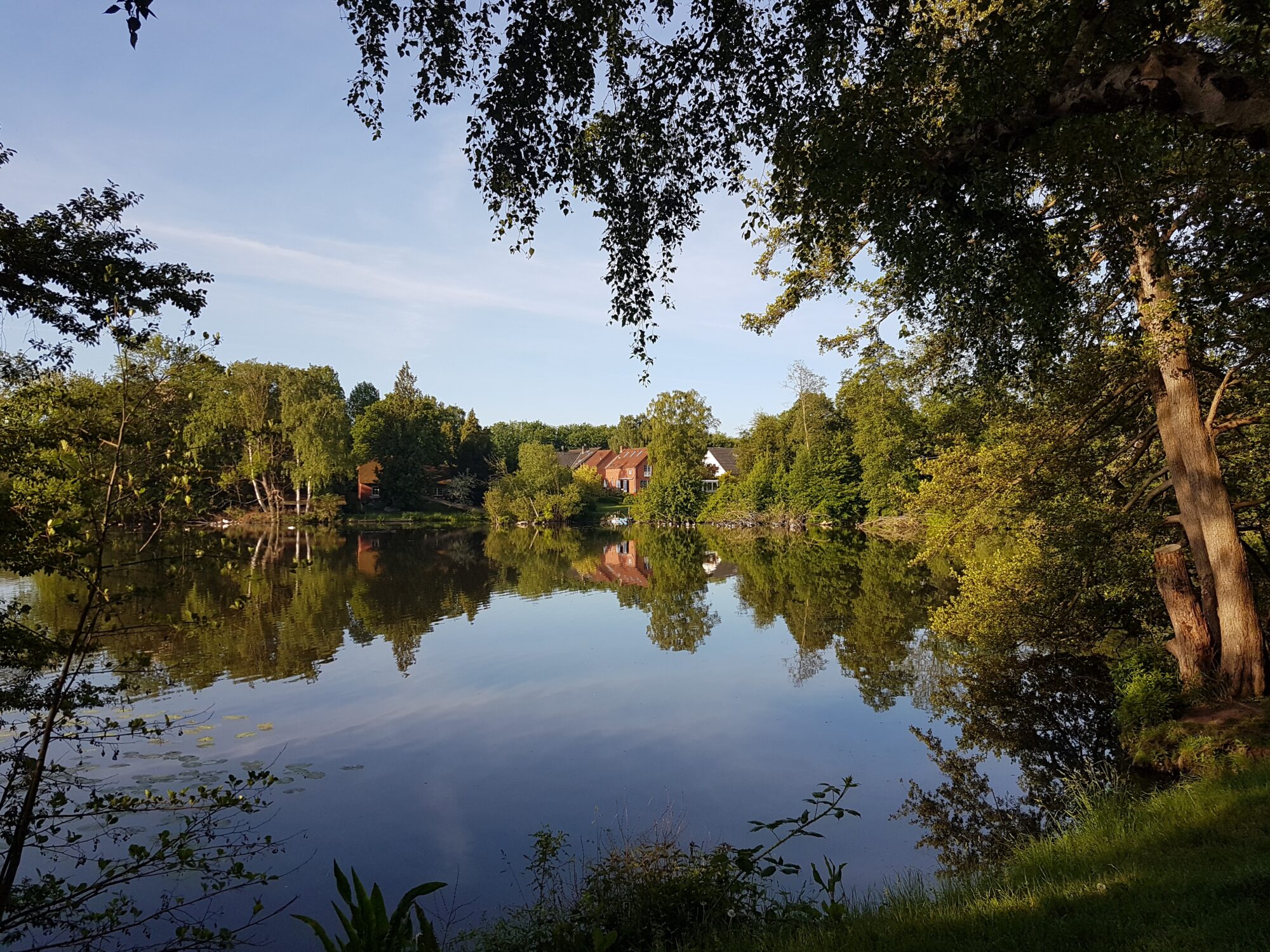
Total length: about 20 km
Along this route of about 20 km, you’ll see the great variety of Lübeck and its surroundings: medieval old town and distinguished suburban villas. Dense, shady deciduous forests and sandy heaths.
Beyond the Castle Gate you pass stately town villas along Roeckstraße street. On the eastern edge of the city, you’ll dive into the shady beech forest of Wesloer Forst. Once upon time, this was borderland in the shadow of the Iron Curtain. Beyond the forest lake and the old Landgraben – once the limit of Lübeck’s rural belongings – the landscape opens up to the Palinger Heide with sandy soil, heather and meadows – a sight that reminds me a bit of the Lüneburger Heide.
You’ll return back to the city following the river Wakenitz, which meanders for miles between small boat harbors, woods, waterfront properties and gardens into the city. A unique landscape with a touch of idyllic Sweden. To me, this is one of Lübeck’s chocolate sides. Be sure to take the time for a break with a picnic by the water or a bath!
On the Drägerweg to Lake Blankensee
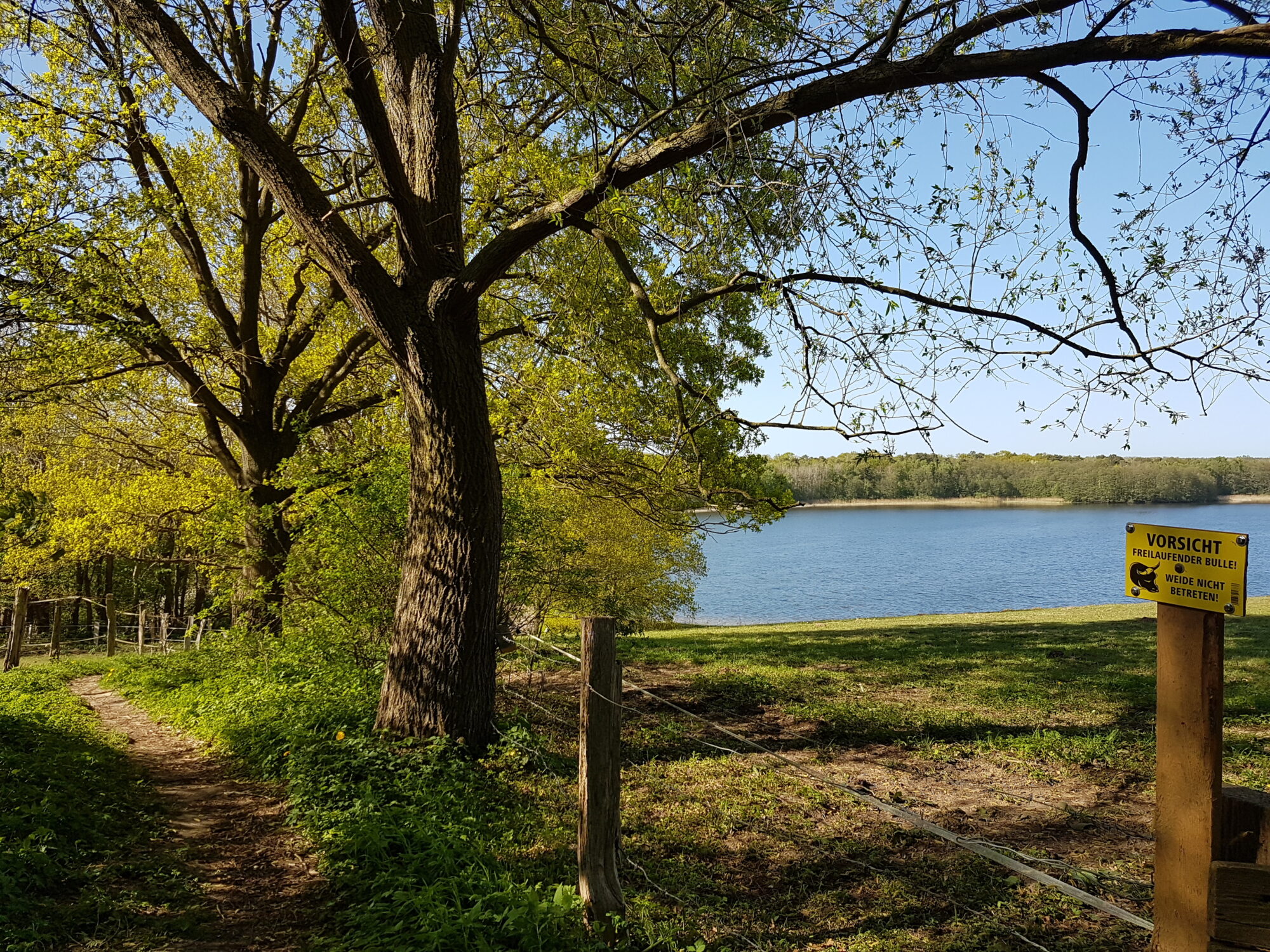
Total length: approx 32 km
Among locals, the Drägerweg is an institution. A scenic gem. The trail follows the river Wakenitz – the “Amazon of the North”. The title is no coincidence – the dammed river winds broadly and leisurely through dense forests and marshlands, giving an impression of very pristine landscapes. The memorial stone “Löwenstadt” commemorates the failed foundation of a city by Henry the Lion, who tried to stand up to the ambitious Lübeck in 1157. However, the Wakenitz is hardly navigable this far upstream. Henry’s “Lion City” has never been much more than a pipe dream.
Shortly after, you leave the trail “Drägerweg” and turn right to Klein Grönau, where you’ll find the former “Siechenhaus” face to face with the small chapel “Wegekappelle” , now a guesthouse. In the 14th century, this is where Lübeck’s lepers found care or their final resting place – as devout Christians, this was their right. At the same time, they were kept as far away from the city center as possible.
The street “Am Sonnenberg” leads you to the lake Blankensee. Right before getting there, you turn left into the path “Seekrug” and shortly after, turn right again into a narrow hiking trail. On the hill top between two farms you’ll reach a nice view point with a bench. An ideal place for a picnic with a view over the small valley and the lake, which provides shelter for numerous water birds. The trail “Tüschenbecker Mühle” leads you downhill through the forest back to Lübeck.
Picnic and bath at Klempauer Hofsee
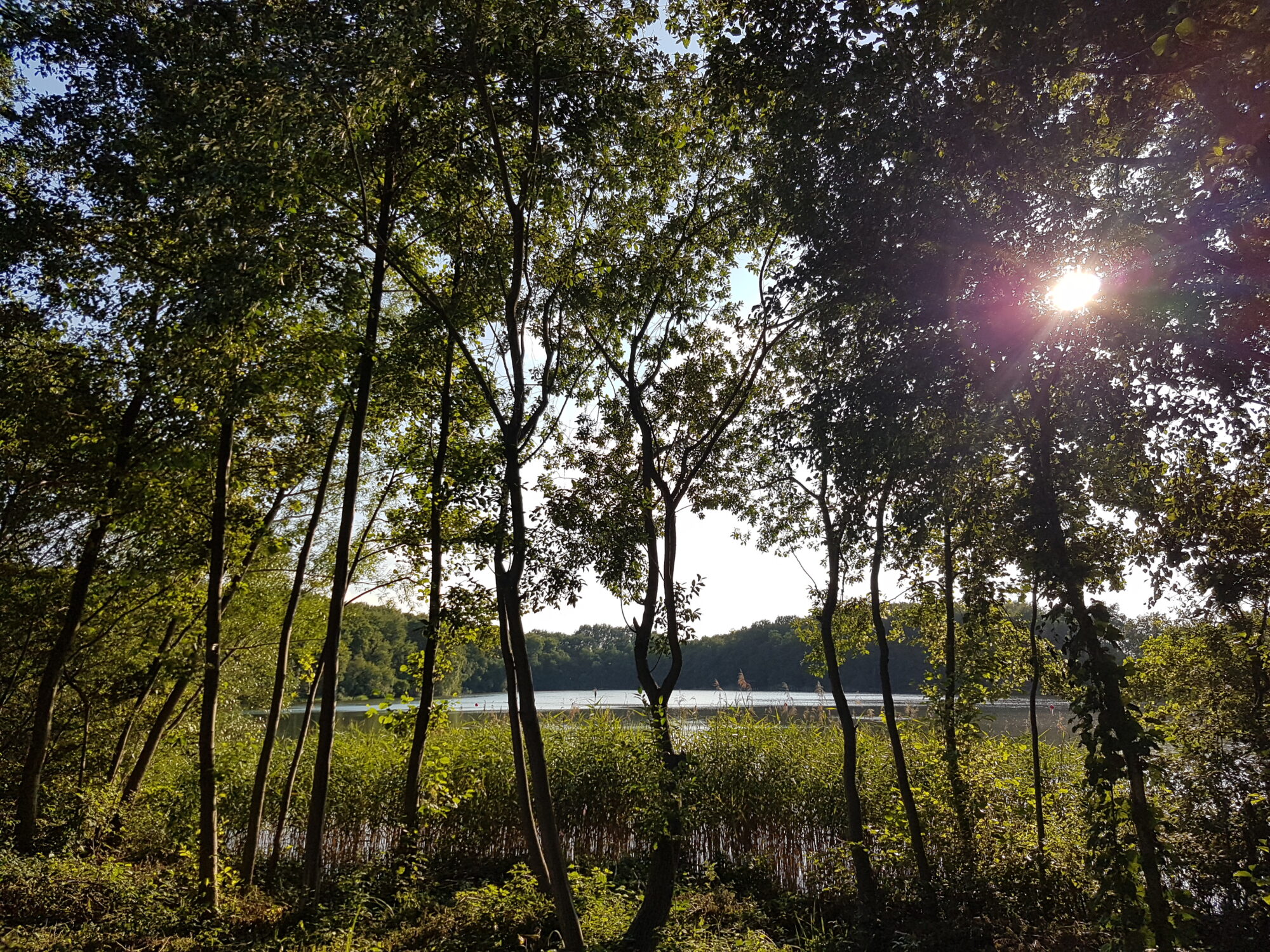
Total length: approx 28 km
This route of 28km fits perfectly with the summer evenings after work. The route leads you from St. Jürgen through the villages Vorrade and Wulfsdorf. Undulating, sun-soaked fields and wide views characterize the landscape south of Lübecks “Hochschulstadtteil” (university district) The destination is Klempauer Hofsee in Beidendorf – an idyllic forest lake with a DRLG-guarded beach and an excellent place for a picnic.
The lake water is pleasantly fresh even during high summer. Bistro Schilfkate offers delicious snacks and cool drinks with a view of the lake. After a bike ride, a bath and maybe a piece of tarte flambée, it’s great to stretch out in the deck chairs and relax for a while.
The way back then leads via Krummesse and along the Elbe-Lübeck Canal.
On the old salt road to Lake Lankau
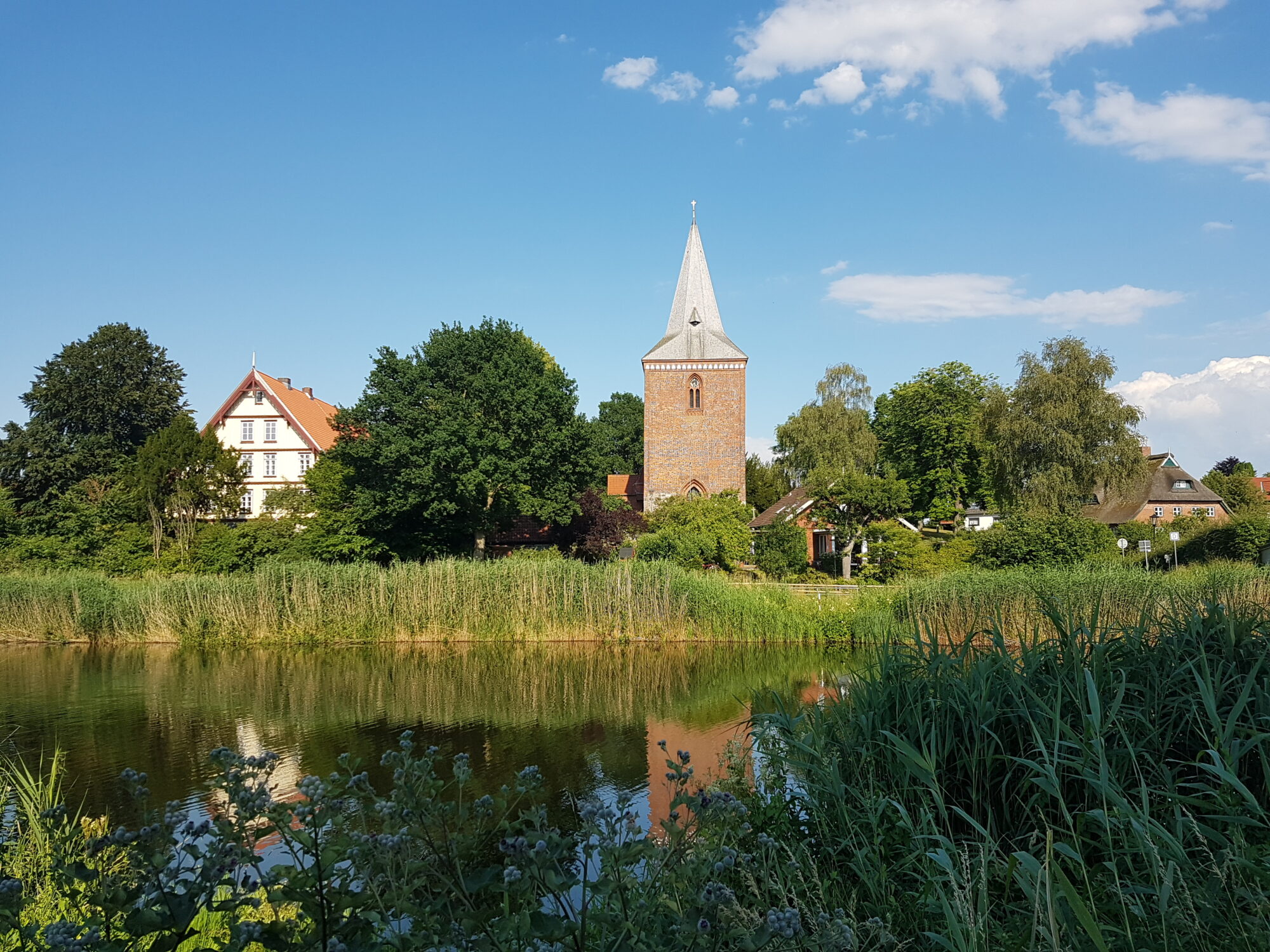
Total length: about 60 km
This day trip of about 60 km is particularly suitable for warm summer days. The route follows the Old Salt Road along the former Stecknitz River – today’s Elbe-Lübeck Canal. There is a lot to see along the way: picturesque farming villages with centuries-old history, stately mansions and idyllic forest lakes. Leave as early in the morning as possible and plan enough time for all the sights along the way.
You leave the city along the Kanaltrave, cross the Trave on the Treidelweg bridge and from then on it’s always southbound along the Elbe-Lübeck Canal. As early as in the 14th century, the Stecknitz was made navigable with the help of several locks. A cut-through was made at Mölln in order to achieve a shipping route between the river Elbe and the Baltic Sea. From 1398, among other things, precious salt from Lüneburg was transported via the canal to Lübeck, where it was shipped for trade with Scandinavia and the Baltic States. The historic salt warehouses at Holsten Gate still bear witness to this trade.
You’ll cycle on sandy paths along this historically significant route through extensive meadows and forests, fields and moors, home to herons, storks and many birds of prey.
The first stop is the small village of Krummesse with its distinctive church and the site of a former castle, abandoned already in the late Middle Ages. The local knights were not prepared to become vassals of the up-and-coming burghers of Lübeck. You can learn more about the history of the place here.
In Berkenthin the Maria Magdalenen Church overlooks the Stecknitz valley from a small hill. With its surprisingly rich interior and 14th century wall paintings, it is definitely worth a visit. In neighboring Behlendorf there is not only a popular bathing lake with toilets and gastronomy – it is also worth mentioning that the village was the last home and resting place of the Lübeck writer and Nobel Prize winner Günter Grass. (Maybe you’re up for the Tour de Grass?) But my personal highlights of this route are the next two stops.
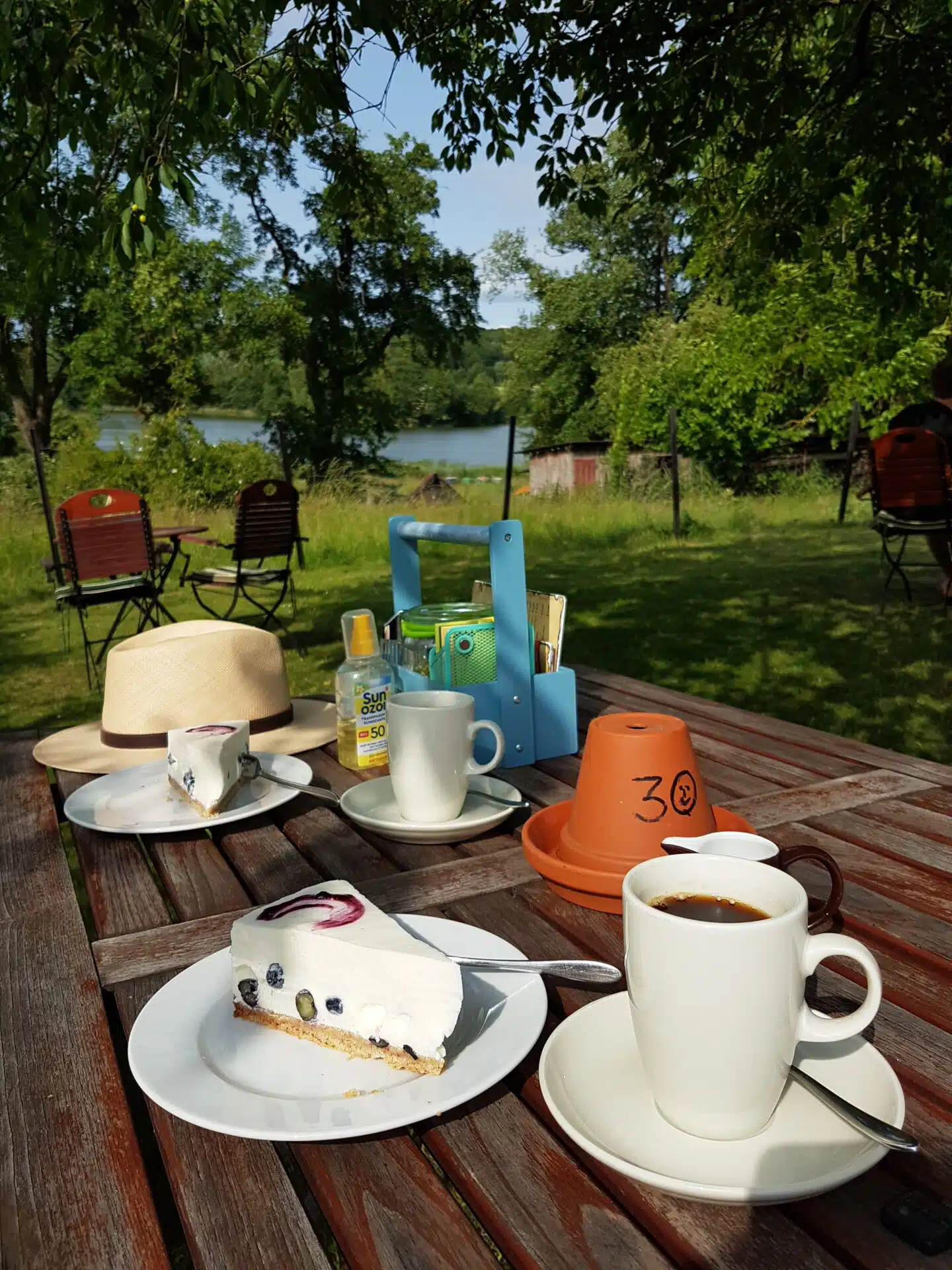
Below the sleepy village of Lankau, you’ll find a beautiful, clean, emerald green forest lake. An oasis of tranquility that you should not miss. Not far from Lake Lankau, a small culinary highlight awaits you on the way back. In a lovingly restored farmhouse on the banks of lake Ankersee, Anja and Christoph Brandt run a café with the clever name Brandtschatz Café. The history of this Inn can be traced back to the year 1600.
You’ll sit under fruit trees with a view of the lake. Anja conjures up fantastic cakes and pies. My current favorite is their buttermilk tart with blueberries – summery refreshing and not too sweet.
Now it is time for the way back. If you want a shortcut, take the train from Mölln or Ratzeburg.
On the Drägerweg to Ratzeburg and on to lake Küchensee
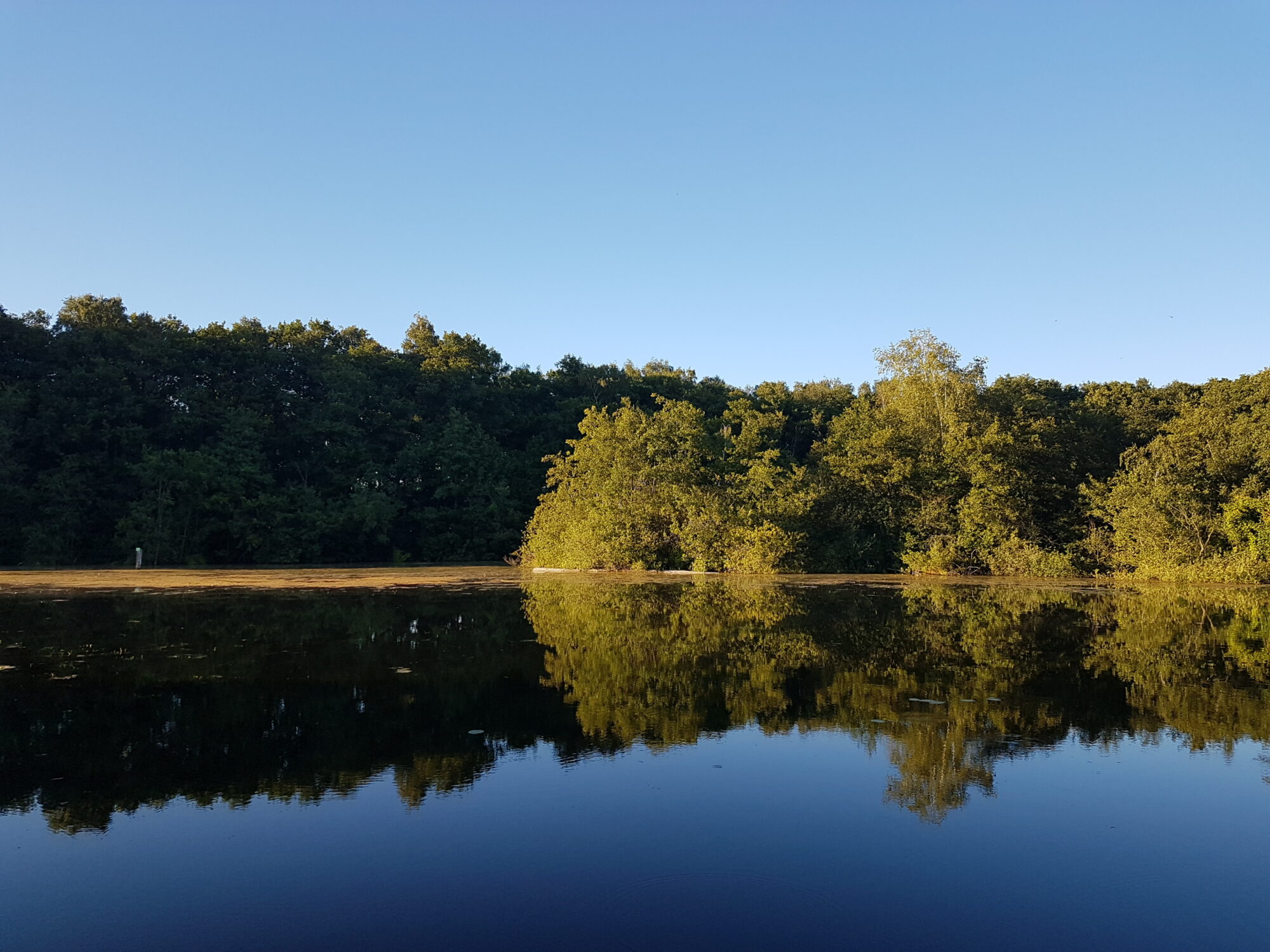
Route length: approx 34 km
From Lübeck to Lake Ratzeburg. This bike tour of about 34 km can be done in half a day, but it is better suited as a day trip.
You start on the Drägerweg along the Wakenitz. Dense deciduous forests flank its course and are reflected in the calm waters; mirror images only occasionally distorted by the rippled waves of a few canoeists.
You will pass destinations like Müggenbusch or Absalonshorst and the memorial stone of the Löwenstadt; as a worthwhile resting place about halfway, we especially recommend the Fährhaus Rothenhusen. The quaint half-timbered house stands on a small island between lake Ratzeburger and the outflow of the Wakenitz. It looks back on a history of more than four hundred years and was founded and fortified by the city of Lübeck in 1595 as a customs station and ferry house. Today it is operated as a café and restaurant.
Continue along the hilly eastern shore with deep deciduous forests and expansive views across the region’s second largest lake. This was once border area and notorious for GDR agents who were said to have crossed the inner-German border under the cover of night.
The island town of Ratzeburg is located in the middle of lake Ratzeburger – connected to the mainland by three dams. Ratzeburg, originally a Slavic foundation and later a bishop’s seat, looks back on a history of almost 1000 years. A walk through the old town and a visit to the cathedral are recommended not only because of the natural beauty of the location.
This is where the trip could end. If you want more, you can cycle a lap around Küchensee. Surrounded by steep hills and dense deciduous forest, you can easily spot adult pike in the crystal clear water, standing among roots and lurking for prey.
On the southern shore of lake Küchensee you’ll find two former water mills. The former fulling mill is used today as Farchau mill café. Ideal for a break with delicious coffee and cake. The second mill is a lovingly restored former paper mill, which is now part of the luxury holiday complex Zeit am See.
Before you push your bike onto the train to Lübeck, I would like to highlight one last attraction. Coming from near or far alike – if you want to eat ice cream in Ratzeburg, you go to Pelz. For five generations, the Pelz family has been running their ice cream business right on the lakeshore. If delicious ice cream specialties don’t leave you cold on hot summer days, you should allow yourself a little treat here.
Now it’s your turn. Whether you’re from Lübeck, live in Leipzig or are currently studying in London, what are your favorite bike routes and why?
